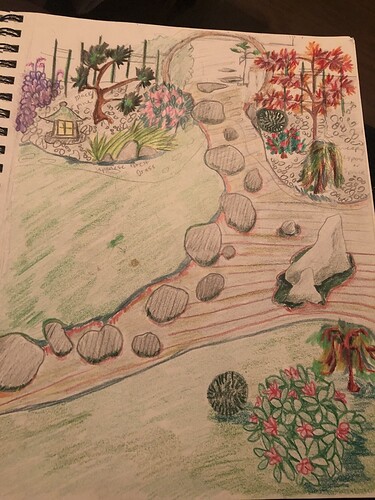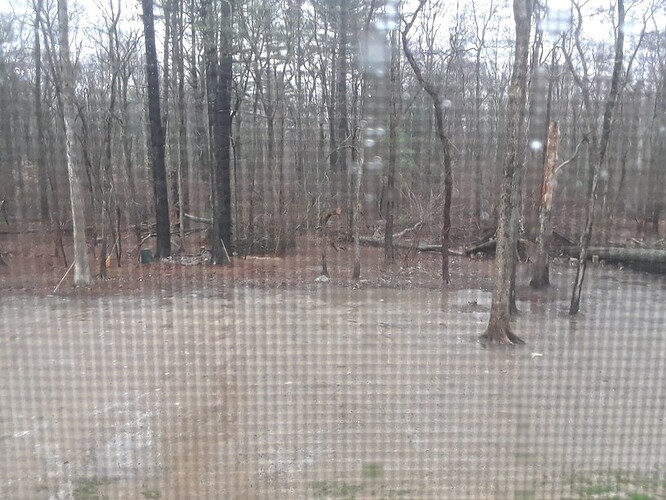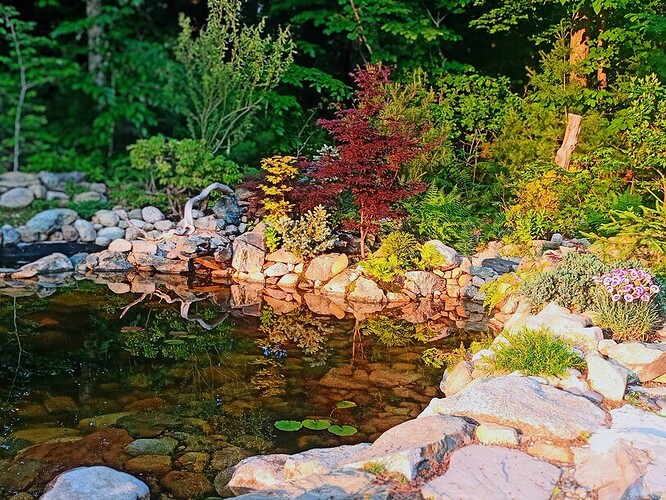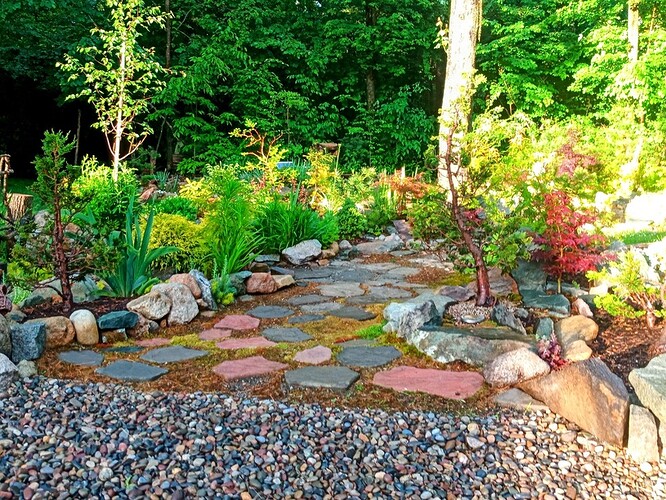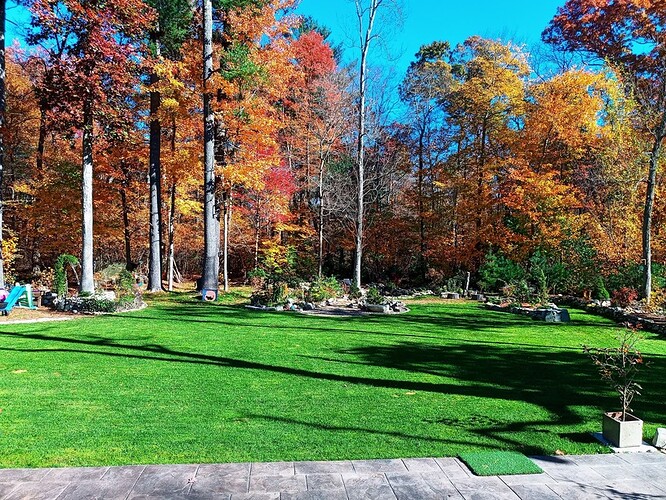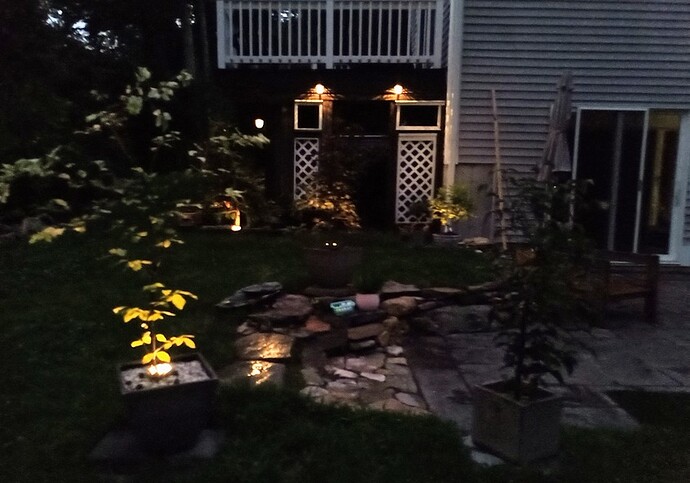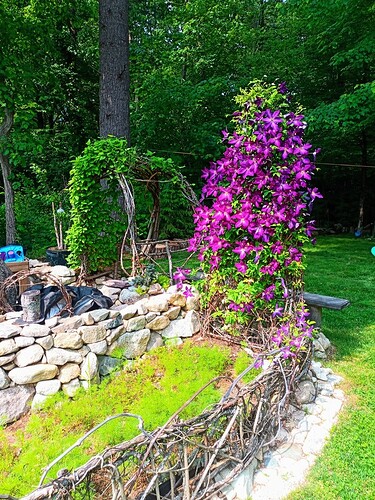My wife and I are waiting for our new construction home to be completed. While we wait I am working to design the exterior landscaping. Our new home will sit on 2 acres with the home in the middle. I would like to incorporate a small bonsai garden in the backyard but I would also like to incorporate some Japanese/bonsai Garden principles in the landscaping around the home. I value the thoughtfulness of typical japanese garden design, with placement and selection of plant material as well as balance throughout and the idea of different plants taking on more prominent roles throughout the year.
Any suggestions either on layout or material selection with these ideals in mind? I am located in eastern Mississippi (Zone 8). I am thinking of doing some mulched beds around the exterior, I want to incorporate some nice Japanese maples as focus areas but am somewhat stuck past that for ideas. Any help is appreciated!
1 Like
My recommendation is to find a reputable nursery for plants that do well in your zone. Find maple and pine and spruce and cypress that thrive, and then ask if they do landscape plans for customers. If they have local landscape architects, they should work with you to develop a plan that you can plant or they can plant for you. We had plans drawn by a local nursery to plan for 5 and 10 year development. Over that time period you can choose to leave them natural or to train using Niwaki methods. Most Japanese style garden have water features in my experience. A stream or even a dry stream bed can add interest and natural curves to the design.Have fun… make it unique… take photos of your progress.
Hey Oneshot. I built a Japanese zen garden that surrounds one side of the house. I did it in 3 stages. I drew sketches of what I was looking to do. Picked out the plants after researching. Worked over the next 3 years to accomplish. Mind you, I did not work the whole summer. Started inApril and finished 3 months later. I would b glad to help you out. I know what a daunting task it may seem. Here is the first section.
3 Likes
Wow, nice work! I would certainly appreciate any help. Did you do you do your planning by hand or use a sw program?
1 Like
Thank you. I actually sketched it out. Here is a the original sketch.
As you can see, I was able to follow the essence of the sketch but the garden has a life of its own and will evolve with time. As you proceed , changes will occur as you see the garden take shape. You may be inspired. I had one rock in the zen garden but after more research and seeing the rocks in person I chose a different path. The one I used was with 3 rocks. It is called reclining Buddha with his attendants. This I saw in a book.
4 Likes
It is best to start with a rough design idea on paper of what and where you want your special features of the garden. It is important to start a budget of what you want to spend on the special features since these features make the garden but at the same time they deplete your bank account quickly. This budget is above what you mentally first want to pay.. Important note, a good Japanese style garden is expensive anything less is is more “in the style of”.
Then use a hose or spray paint to layout your design on the ground. You can use tools or tall stakes to indicate possible plantings or rock and special features. I recommended having a book or two about Japanese gardens with you for reference.
Once you have the ideal set out in the space where you want the garden, start working the area to create the topography, adding mounds or digging ponds. Then add the featured items ponds, paths, bridges, irrigation, lighting, special rocks and special plants. These are all “money items” and as it is too the most part how much you spend is typically reflected in the final view of your garden.
It is good to find the best nursery in your region to get your plant material. With supply it is now very difficult to get a lot of the plant material typically associated with a Japanese garden. I even recommend contacting nurseries in Oregon such as Iseli to find out if they distribute to a nursery near you.
So personal comments, it is best to set up your garden around a bonsai display garden for access to watering and maintenance. As for ponds and streams, they are very nice but required far more maintenance and money. Dry steam beds are awkward to move around while maintaining. After years of having ponds and dry beds I am replacing them slow growing dwarf plants which allows me more free time to enjoy the garden. I attached a photo of a bed which had a little pond in it since the mid 1980’s
Have fun
3 Likes
Great insight. I am definitely going to need to create it in phases. My inital budget is around $6,000 but I plan to do the majority of work myself. A few follow up questions:
- Any recommendations of books?
- I have only seen small stock for the majority of trees/ larger shrubs in my local nurseries, Is it feasible to get a more established tree such as a Japanese Maple from more specialized nurseries? The largest I have seen locally have ~3/4" to 1" trunks and maybe 3-4 ft tall.
- Have you installed any irrigation into your gardens or do you typically handwater?
Thanks!
1 Like
I can’t recommend any specific book. In a way you can just search online to find views of a garden you want to recreate in your place.
As for nurseries, I would search for growers of dwarf conifers and Japanese maples and call them directly to see if they sell to a regional nursery to you. I have been driving 400 miles plus roundtrip to get trees. Iseli Nursery is one of the best for a good variety of plants that fit a Japanese style garden. Find out if they distribute to a nursery near you. If so you may try and work a deal with the locate nursery to try and order trees just for your garden. This also give you time to build.
The same with rocks, you need to find an area where there is a rock quarry or a specialty rock supplier.
Irrigation, I have install a system that I really like. I bought it from M&L Irrigation in South Carolina. They shipped it to me. It is a “drip system” with flexible pipes and no glue couplers. The heads are call spike 360 and can spray up to a 4’ circle and with the spaghetti line I can place the heads where ever I want. Most trees do well with just one head but I have big trees that might have 6 heads around the drip line of the trees canopy.
1 Like
Just remember to build it for how it will look in 10 years. Trees need a lot more space to fill out, otherwise you’ll end up having to artificially keep them small. Topping works fine on a bonsai tree, not so well on a full size tree.
1 Like
Just hopping in for your specific question about books.
I think what most people consider the canonic book on Japanese garden design is, " Sakuteiki Visions of the Japanese Garden: A Modern Translation of Japan’s Gardening Classic" by Jiro Takei and Marc Keane.
Here is my 5 year build, did it all by hand ( me a wheelbarrow, chainsaw and an imagination that forced me to studying many disciples along the way) I did it this way because most people’s top constraint will be money and if you are inspired by something but can’t afford it, it’s easy to let that idea die. No advanced planning on paper. Some principles, effort and serendipity.
80% of the trees are and have been in grow bags Telperion style.
It’s about.6 acres and the most interesting parts are the some detail areas. I have 2 dogs and a toddler ( well not anymore now a 7 year old)
so a lot of choices were based on that.
Pond was dug by hand ( skipped the gym for 14 months ang dug every day for an hour (18x12 @. 4.5 ft deep ots deepest biological filter and I test it and it’s as safe as pool water minus chlorine ( no fish too much nitrogen)
All of the stone came off the property or the woods behind me ( I skip the gym when the bugs and poison ivy goes dormant and
just carried stone for 60 minutes ( it’s as boring as it sounds). I figured I’d share it here because the commitment needed for bonsai makes what I did probably reasonable to most of you…and if money is a design constraint use it in the process don’t give up on your idea
To tie this story up in a bow, the reason I initially got interested in bonsai was to learn how to transplant pinus strobis, almost all of the yard and surrounding woods was over run with Japanese knotweed. So the journey started as a way to grow grass and stop the most invasive plant in my area and it took me through, stonemasonry, concrete free form and molds, carving, weaving, traditional woodworking, biological and eco systems, horticulture, design and to the world of mini trees! Hopefully this encouraged someone to go for it. I also had a patient wife  who isn’t very visual so she put a lot of blind faith in me to figure it out
who isn’t very visual so she put a lot of blind faith in me to figure it out 
4 Likes
Wow, this is truly impressive. Thank you for sharing. This certainly gives me motivation and some ideas. Start small and working on it over time sounds like a good plan:)
1 Like
Thanks and you nailed… frequency is and was the key for me and for 4 years people must have thought I was insane ( that’s how you know your track).
Now I try to only have one large project ( multi month as I may only get an hour a day) going on at a time and lots of other exploratory projects including bonsai. Good luck and go for it!
2 Likes

